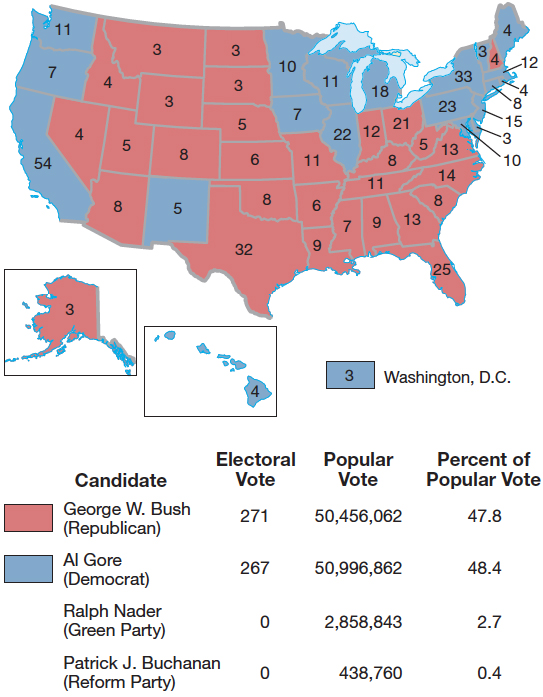The Disputed Election of 2000
Printed Page 951
George W. Bush won the Republican nomination after a series of richly funded, hard-fought primaries. The oldest son of former president George H. W. Bush, he had served as governor of Texas since 1994. Inexperienced in national and international affairs, Bush chose for his running mate a seasoned official, Richard B. Cheney, who had served in three previous Republican administrations. Many observers predicted that the thriving economy would give the Democratic contender, Vice President Al Gore, the edge, and he did surpass Bush by more than half a million votes. Once the polls closed, however, it became clear that Florida’s 25 electoral college votes would decide the presidency. Bush’s tiny margin in Florida prompted an automatic recount of the votes, which eventually gave him an edge of 537 votes in that state.

Meanwhile, the Democrats asked for hand-counting of Florida ballots in several heavily Democratic counties where machine errors and confusing ballots may have left thousands of Gore votes unrecorded. The Republicans, in turn, went to court to try to stop the hand-counts. The outcome of the 2000 election hung in the balance for weeks as cases went all the way to the Supreme Court. Finally, a bitterly divided Court ruled five to four against further recounts. While critics charged partisanship, noting that the conservative justices had abandoned their custom of favoring state over federal authority, Gore conceded the presidency to Bush. For the first time since 1888, a president who failed to win the popular vote took office (Map 31.3). Despite the lack of a popular mandate, the Bush administration set out to make dramatic policy changes.